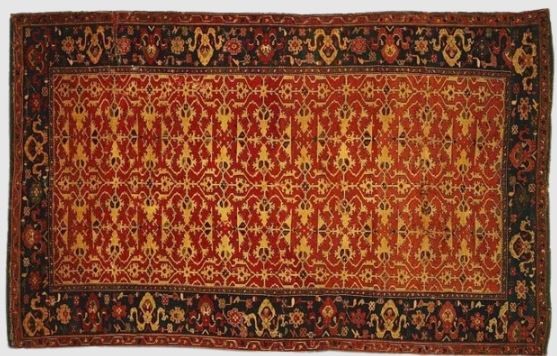Central Anatolia Region Kayseri Natural Bunyan Carpet
Turkmen Bukhara Hand-Woven Carpet
West Anatolia Denizli Baklava Rug
Central Anatolia Taspinar Hand-Woven Carpet
Central Anatolia Afyon Cicim Rug
Central Anatolia Konya Ladik Hand-Woven Carpet
Hand Woven Kazakh Rug
West Anatolia Antique Milas Hand Woven Carpet
Central Anatolia Konya Karapinar Cicim Rugs
West Anatolia Canakkale Ayvacik Hand Woven Carpet
Kazakh Sirvan Hand-Woven Carpet
Hand Woven Central Asian Kazakh Rug
Kayseri Bunyan Vintage Hand Woven Carpet
West Anatolia Balikesir Nomad Rug
Aegean Patchwork Hand Woven Rug
Patchwork from Anatolian Rugs TSH9857463569
East Anatolia Kars Rug
West Anatolia Denizli Cicim Rug
West Anatolia Oushak Esme Rug
West Anatolia Milas Carpet with Double Roses
CARPET MAKING DURING THE OTTOMAN EMPIRE
In XIVth and XVth century Anatolia, where the carpet-making tradition was maintained, the Ottomans produced works in this process.
However, from the XVIth century onwards, the Ottomans brought new techniques and styles to this art, giving it a distinct form and shape. Carpets from this period can be classified as Early Ottoman Period carpets, which are the continuation of the XIVth century, carpets from the XVIth century and Late Ottoman Period carpets from later periods.
Since European painters in the Early Ottoman period depicted the carpets exported to the West in their paintings and frescoes, these are defined as carpets with geometric motifs in terms of shape, form and pattern.
The painting of Ottoman carpets in the West shows the artistic interaction during this period. Turkish carpets, first seen in the paintings of Italian painters in 1451, were depicted in the works of Dutch and German painters until the end of the 16th century.
The carpets of this period are referred to in the literature as "Holbein carpets" after the German painter Hans Holbein. Lorenzo Lotto also painted Turkish carpets with geometric motifs and they are called "Lotto Carpets" after him.


Carpets woven in these regions were exported to Europe in the 18th and 19th centuries and contributed to the Ottoman economy. In the early 19th century, the British
In the last periods of the Ottoman Empire, palace-affiliated factories started to produce carpets to meet the needs of the palace and its surroundings.
During the reign of Sultan Abdülmecid II, weavers were brought to Istanbul from Kayseri, Sivas and Gördes to produce carpets in the Feshane factory in order to meet the large-scale carpet needs of the newly built palaces. Carpet production continued at the Hereke Factory-i Hümayunu for the needs of the palace.
In the annex buildings of Dolmabahçe Palace, there was the Hereke Weaving Factory, which continued production until the last days of Sultan Vahdettin.
The carpets woven in this factory are known as the highest quality hand-woven carpets recognized in international fairs.
As can be seen, the art of carpet weaving during the Ottoman Empire showed a great development both with palace carpets and commercial production in various regions of Anatolia.
This development made significant contributions to the Ottoman economy and culture.


